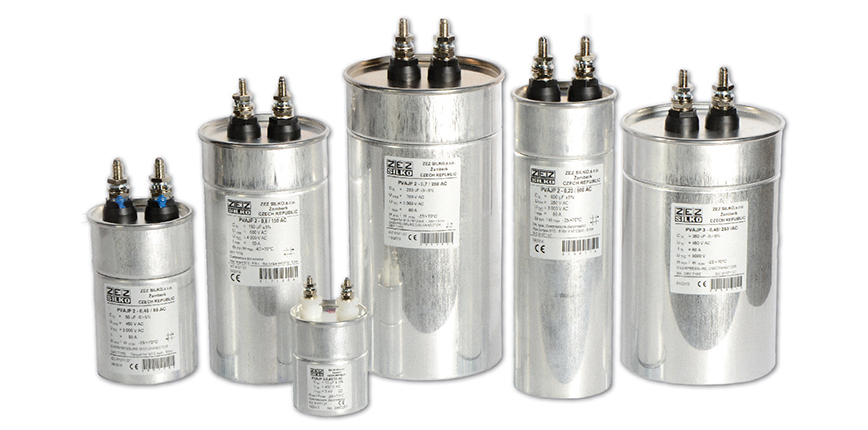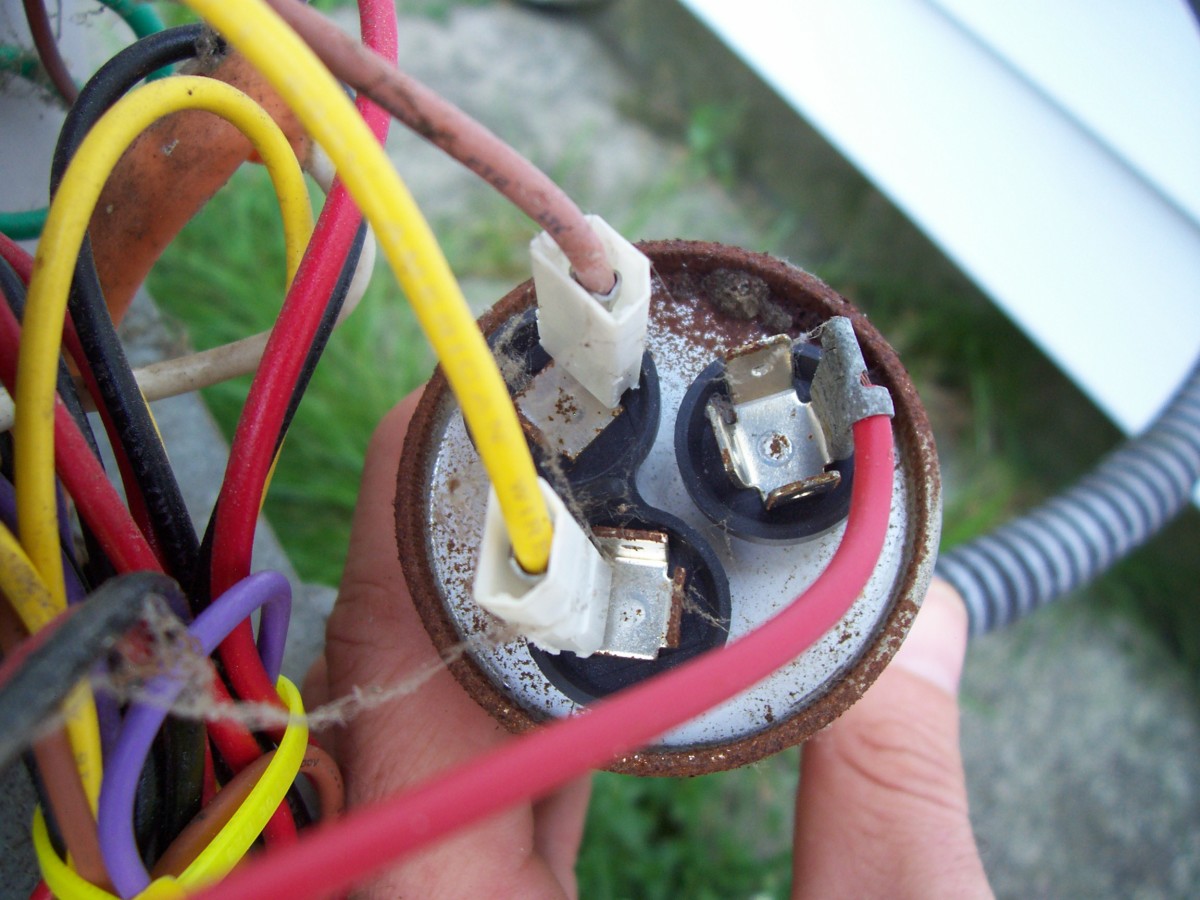Leonard Splaine Does your AC need a new capacitor

The capacitor is small but very powerful and is important for your AC unit to work properly. It’s like a battery, that swaps electrons between two conductive plates. Your unit cycles a lot, so they are turning on and off frequently. They are necessary for your A/C unit to start up because it takes a little bit more energy than just the home’s electricity. Basically, they are designed to store energy and kind of jumpstart the unit.
Capacitors are one of the most common parts that need to be replaced on residential air conditioning systems. They typically provide several years of service, but you’ll need to replace them at least once if you keep the same air conditioner for more than ten years.
Your system might have one or more capacitors. In many outdoor units, there’s a start capacitor, which helps the AC get going when there’s a call for cooling. There’s also a run capacitor, which keeps the system going after it starts up. However, your system might just have one capacitor in the outdoor unit, and certain models even have a capacitor for the indoor blower motor.
Capacitors do look like big batteries, but they connect to wires inside your air conditioning system. Unfortunately, you can’t just pop a capacitor into a slot and close a plastic cap. So it’s not really the same thing as a battery.

How do you know you need a new capacitor?
If your air conditioner is not blowing cold air, a bad capacitor may be the reason.
However, look for the simple solutions first: Maybe you need to change the air filters, or it could be one of several other reasons.
Once you rule them out, if your unit is still blowing warm air, the issue may be the capacitor.
The most common signs and symptoms of a bad AC capacitor include:
- AC not blowing cold air
- AC takes a while to start once you turn it on
- Humming sound coming from your air conditioner
- AC shuts off on its own
- AC won’t turn on
There are also ways to know if your HVAC guy says your capacitor is on the fritz.
- The voltmeter says there are too few microfarads. All capacitors are rated in microfarads. For example, yours might be rated for 35 microfarads with a range of plus or minus 10. If it dips below 25, a voltmeter will tell your HVAC technician that it’s time to replace it.
- It’s swollen like a balloon. When the capacitor is really far gone (and by the time we find them, they often are), it will swell up. Your capacitor might be bad even if it isn’t swollen, but it’s common for a bad capacitor to swell. It will look like someone packed too much material into the tube and it’s bulging at the sides.
- The capacitor leaks oil. This doesn’t always happen, but bad capacitors frequently have oil leaking out of them. A leaky capacitor = a capacitor that’s past its prime.
And there you go! That’s how you know you need a new AC capacitor.
Too much gas
Furnace manufacturers actually have specs for how much gas their equipment should burn. Basically, you’ve got to calibrate the equipment during installation to make sure it works properly. Otherwise, it might stop working at a really inconvenient time.
Like when it’s less than 20 degrees outside. And icy. And the wind is howling.
Sometimes, improperly calibrated furnaces burn too much gas. When this happens over a long enough time period, two things can happen:
- You overpay for gas during the winter
- The furnace overheats, causing it to cycle on a limit switch
We get calls when #2 happens – especially on really cold days when the furnace can’t keep up. That’s why we always perform a combustion analysis during our annual furnace inspections. It tells us whether your furnace is burning too much gas.
Dead blower capacitor
Have you ever seen your blower capacitor? It usually looks like a big battery.
Anyway, the capacitor starts your furnace when the thermostat setting tells it to turn on. Capacitors have tolerance levels. If the tolerance is below a certain level, your blower might not achieve the proper RPM. In some cases, the capacitor just won’t start the blower. The worst-case scenario? A dying capacitor leads to a blower malfunction, which is a really costly repair.
Either way, your heat won’t turn on.
Since capacitor failure is so common, we always check the tolerance of your capacitor(s) during routine inspections. If they’re on their way to a slow death, we’ll let you know it’s time to replace them
Low refrigerant levels
Heating your home with a heat pump? If you are, it’s possible for your refrigerant level to get a bit too low. When that happens, your heat strips might come on more often than you want them to.
And we all know that heat strips can lead to exorbitant utility bills. Not good.
If you recognize your heat strips coming on with increasing frequency, it might be time to increase your refrigerant charge. If the level is too low for too long, the compressor might overheat and fail.
It’s much less costly to recharge the refrigerant (and fix any leaks) than to replace your compressor (and deal with having no heat). In some cases, it might even be more cost-effective to replace the system with a new one that uses newer, R-410A refrigerant!
In any case, always keep an eye on your auxiliary/strip heat status in the winter.
Dead starting components (heat pump)
While we’re on the subject of heat pumps, let’s just acknowledge that all kinds of components can go bad for any number of reasons. Failed starting components, in particular, can prevent your blower (indoor unit) or outdoor unit from starting properly. The system won’t heat your home, and you’ll need to replace the bad parts.
Again, proper maintenance and regular inspection can help you identify problems with these components before they fail. You’ll avoid costly repairs in the future.
Bad inducer draft motor
Also known as a “draft inducer,” this little motor exists to help clear the heat exchanger of leftover gas from a prior cycle and vent all gases produced during the furnace’s combustion process.
If the inducer motor starts pulling high amps, it can eventually burn out. It can also get dirty over time, which causes safety switches to cut the furnace off. During tune-ups, we check the draft to make sure the inducer fan motor is working properly.
Anyway, you’ve got to replace it when it goes bad. Whenever we replace a draft inducer, we also take samples from the flue gas to test the efficiency of your burners and the integrity of your heat exchanger.
Speaking of heat exchangers…
7. Cracked heat exchanger
Ok, a cracked heat exchanger won’t always lead to furnace failure – at least not right away. Still, we want to mention it here because:
- It can impact the efficiency of your system, which you might notice when it gets bad enough.
- Cracked heat exchangers are sometimes indicative of another problem that could cause your furnace to fail, like low airflow due to dirty components.
- It’s a really dangerous problem to have. If you’ve got a cracked heat exchanger, you need to replace it.
The thing about heat exchangers is that there is carbon monoxide (CO) inside of them. When they crack, the CO leaks out. CO can make you really sick, and it can even be fatal in serious cases. The bottom line: You should always replace a cracked heat exchanger or just replace your furnace if it’s past its prime.
Improper ductwork design and/or installation
Sometimes, the problem isn’t your heater at all. It’s your ductwork.
Proper ductwork design and installation is a major undertaking. Unfortunately, many builders and HVAC contractors cut corners or rely on rules of thumb (instead of building science) when sizing and installing ducts. When you’re lucky, you end up with ductwork that’s kind of the right size and installed more or less properly. The system might not operate at peak efficiency, but it will work.
But when they do a really bad job – and it happens! – you’ll never achieve proper airflow throughout your home. Not only will it be hard to stay comfortable, but your furnace will short cycle more often. Over time, it might even overheat. And fail.
The solution is to fix whatever HVAC equipment components failed and redesign your ductwork to the extent possible. Otherwise, you might have the same problem again.
Conclusion
If you turn on your heater and nothing happens, don’t despair; the problem may be one you can solve yourself. If not, a qualified technician can provide a one-time solution, and regular maintenance will help prevent problems in the future.
At Leonard Splaine, we recommend a minimum of two routine service visits per year: one in the fall, just before the weather starts to get chilly, and once again in the early spring before A/C becomes non-negotiable.
When you work with us, you can rest assured that you’re getting the best of the best.
If you’re ready to have your air conditioning and heating system serviced by a pro, give a Leonard Splaine expert a call at (571) 410- 3555 or contact us. You’ll be pleased with your experience—we guarantee it!
